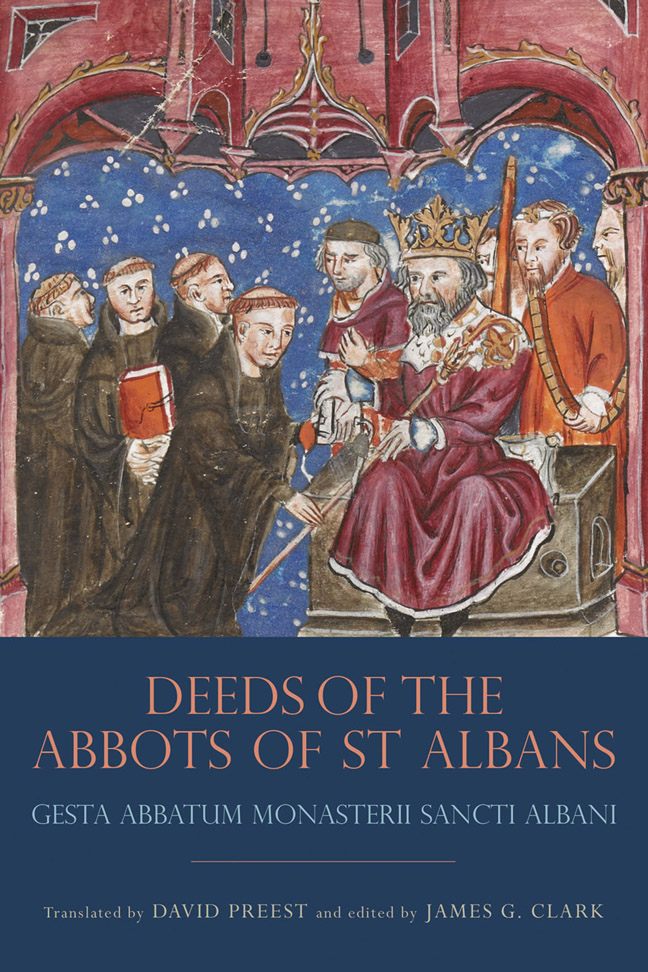Book contents
- Frontmatter
- Contents
- List of Illustrations
- Acknowledgements
- List of Abbreviations
- Introduction
- The Translation and its Sources
- The Deeds of the Abbots of St Albans
- Appendix A Thirteenth-Century Précis of the Deeds of the Abbots of St Albans: British Library, MS Cotton Vitellius a XX
- Bibliography
- Index
12 - Leofstan
Published online by Cambridge University Press: 17 February 2024
- Frontmatter
- Contents
- List of Illustrations
- Acknowledgements
- List of Abbreviations
- Introduction
- The Translation and its Sources
- The Deeds of the Abbots of St Albans
- Appendix A Thirteenth-Century Précis of the Deeds of the Abbots of St Albans: British Library, MS Cotton Vitellius a XX
- Bibliography
- Index
Summary
Leofstan the twelfth abbot
He was succeeded by Abbot Leofstan, known as Plumstan. During Leofstan’s abbacy five estates with all their belongings were given to this church with the agreement of King Edward. Leofstan had been the friend, confessor and counsellor of the king and Queen Edith. He had tirelessly advised and persuaded them to follow the course of chastity. Abbot Leofstan performed this service effectively, when he learned that the king did not have long to linger in this world. He was also greatly helped by the prayers of the queen, namely the holy Edith. She was constantly in attendance at the king's side, even when he was about to die and at the actual moment of his death.
The estates of Studham, Redbourn, Langley, Granborough and Fawn Wood are charitably given to the church of St Alban by Oswulf and Æthelwine the Black
The first of the five estates, the one called Studham, was given to Leofstan by Oswulf and his wife, Adeliya; the remaining four with other revenues, gifts and precious objects, namely Redbourn, Langley, Granborough, and Fawn Wood were given to him by Athelwine the Black and his wife Winfleda.
Also Abbot Leofstan granted to the widow, Thova, the tenancy of the ‘vill’ called Cryctin in return for her sending to the church of St Alban each year during her lifetime one sester and thirty-two ounces of honey, and also having herself paid to the same abbot a premium of thirty marks of gold. All these details can be found in the documents of this church written in English.
This Abbot Leofstan, surnamed ‘Plumstan’, was a God-fearing and simplehearted character. He had a ready sympathy with all those in danger, whether travellers or pedlars or even pilgrims journeying to the church of St Alban for the forgiveness of their sins and the well-being of their bodies. Dense woods extend from the edge of the Chilterns almost as far as London, and, to make the roads safer for travellers, he had the woods on the northern side of the town, especially those bordering the royal road known as Watling Street, cut down, their thickets cleared, bridges built and the steep ascents reduced to a safer level.
- Type
- Chapter
- Information
- The Deeds of the Abbots of St Albans<i>Gesta Abbatum Monasterii Sancti Albani</i>, pp. 102 - 106Publisher: Boydell & BrewerPrint publication year: 2019

